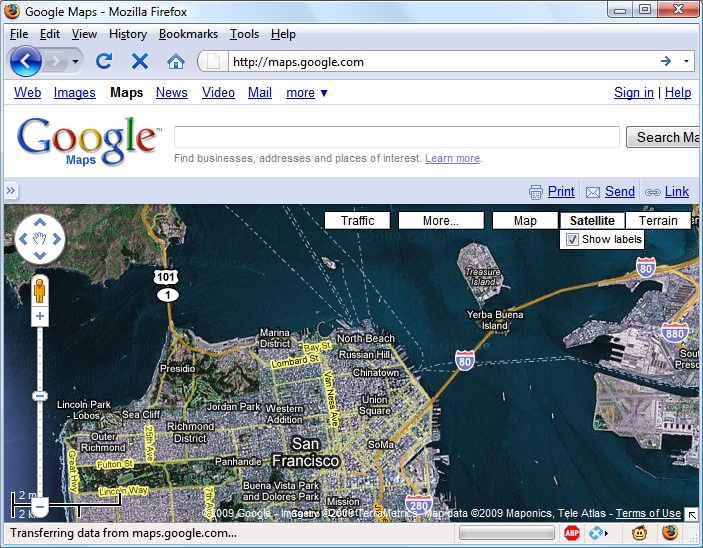Chapter 18. Using Ajax
The term “Ajax” was first coined in 2005. It stands for Asynchronous JavaScript and XML, which, in simple terms, means using a set of methods built into JavaScript to transfer data between the browser and a server in the background. An excellent example of this technology is Google Maps (see Figure 18-1), in which new sections of a map are downloaded from the server when needed, without requiring a page refresh.

Using Ajax not only substantially reduces the amount of data that must be sent back and forth, it also makes web pages seamlessly dynamic—allowing them to behave more like self-contained applications. The results are a much improved user interface and better responsiveness.
Get Learning PHP, MySQL, and JavaScript now with the O’Reilly learning platform.
O’Reilly members experience books, live events, courses curated by job role, and more from O’Reilly and nearly 200 top publishers.

